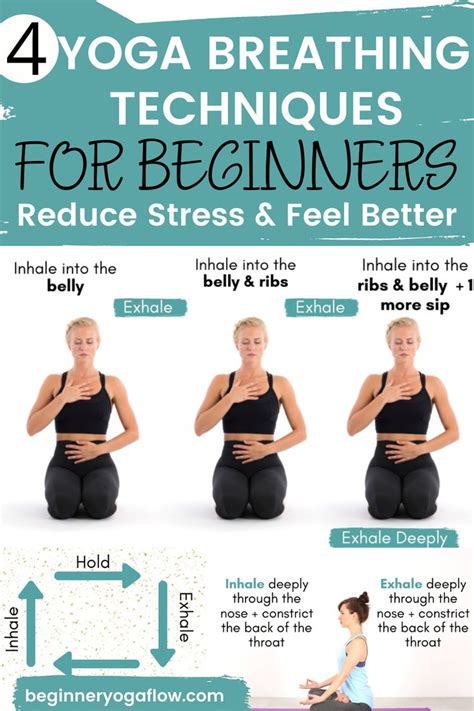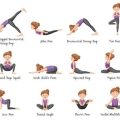The 6 Most Effective Types of Breathwork in Yoga Practice for Mind-Body Wellness
Breathwork, or pranayama as it’s known in yoga, is an essential aspect of the practice that enhances both the physical and mental dimensions of well-being. It involves the conscious regulation of the breath to cultivate energy, calm the mind, and optimize the body’s physiological responses. In modern yoga, breathwork has gained popularity not only as a complementary technique to postures (asanas) but also as a standalone practice. This article explores six essential types of breathwork in yoga, explaining their benefits, techniques, and real-world applications. We’ll also delve into the historical significance and future implications of breath control in yoga practice.
Key Concepts of Breathwork in Yoga
Before diving into specific techniques, it’s essential to understand the fundamental principles of pranayama. The word ‘pranayama’ is derived from two Sanskrit words: prana (life force or breath) and ayama (extension or control). Pranayama, therefore, involves controlling the life force through specific breathing techniques to influence the energy flow within the body.
- Prana: The vital life force that exists in every living being, closely tied to breath.
- Ayama: The act of extending or restraining the breath to balance the mind-body connection.
Various pranayama techniques influence different physiological and psychological states, from boosting energy and focus to promoting relaxation and stress relief. Let’s explore the six primary forms of breathwork commonly practiced in yoga.
1. Nadi Shodhana (Alternate Nostril Breathing)
Technique: Nadi Shodhana is performed by alternately closing off one nostril while inhaling and exhaling through the other. This cycle is repeated with a focus on balance and calmness.
Benefits: This technique is known for purifying the subtle energy channels in the body, helping to harmonize the left and right hemispheres of the brain. It also reduces stress and enhances concentration. It’s often used to prepare for meditation.
Practical Example: An executive, feeling overwhelmed at work, practices Nadi Shodhana during breaks to center herself and improve focus for key meetings.
2. Ujjayi (Victorious Breath)
Technique: Ujjayi breathing involves slightly constricting the throat while breathing in and out through the nose, creating a sound similar to ocean waves. The breath is controlled, slow, and steady.
Benefits: Ujjayi enhances oxygenation, builds stamina, and increases mindfulness. The audible breath serves as a focus anchor during yoga practice, calming the nervous system.
Real-world Use: Athletes practicing Ujjayi before a competition report feeling more centered and prepared mentally for high-pressure environments.
3. Kapalabhati (Skull Shining Breath)
Technique: Kapalabhati involves rapid, forceful exhalations followed by passive inhalations. The breath is driven by the diaphragm, with strong abdominal contractions for each exhale.
Benefits: Kapalabhati invigorates the body and clears mental fog. It’s often referred to as a cleansing breath, expelling toxins and refreshing the respiratory system. It also energizes the mind.
Practical Scenario: A yoga teacher uses Kapalabhati in the morning to stimulate energy and concentration for teaching multiple back-to-back sessions.
4. Bhramari (Bee Breath)
Technique: In Bhramari, practitioners close their eyes and ears with their fingers and make a humming sound (like a bee) as they exhale. This creates vibrations throughout the head and body.
Benefits: Bhramari is particularly effective for calming the mind, alleviating anxiety, and reducing anger. It’s used to soothe the nervous system and can be an excellent remedy for insomnia.
Example: A student struggling with exam anxiety practices Bhramari for 5 minutes before bed to help with restful sleep.
5. Sitali (Cooling Breath)
Technique: Sitali is performed by curling the tongue and inhaling through the mouth, feeling the coolness of the air. The exhale is then performed through the nose.
Benefits: This cooling breath is ideal for lowering body temperature and calming both the body and mind. It is especially useful during hot weather or after vigorous exercise to avoid overheating.
Practical Example: A long-distance runner in warm climates uses Sitali after their run to cool down the body and stabilize heart rate.
6. Viloma (Interrupted Breathing)
Technique: Viloma breathing interrupts the inhale or exhale with pauses. For instance, a practitioner might inhale for two seconds, pause, then continue inhaling and repeat. The same applies to exhaling.
Benefits: This breathwork helps control the breath in challenging situations, improves lung capacity, and calms the mind. It builds awareness of breathing patterns.
Example: A singer practices Viloma to enhance control over their breath during long performances, especially while holding notes.
Historical Context of Pranayama
Breathwork has deep roots in yogic philosophy, dating back thousands of years to early Hindu and Buddhist texts. In the Upanishads and Bhagavad Gita, prana is described as the energy that sustains life. Ancient yogis believed that controlling the breath allowed practitioners to control their minds and gain mastery over both body and spirit.
In the early 20th century, breathwork became a significant component of modern yoga when pioneers like Tirumalai Krishnamacharya revived and systematized it for contemporary practice. Pranayama was re-introduced into popular culture through yoga schools worldwide, blending ancient wisdom with modern science.
Current State of Breathwork in Yoga
Today, breathwork has become a mainstream practice, not only within the realm of yoga but also in psychotherapy, sports performance, and stress management programs. While traditional pranayama remains at the core of breathwork, modern variations tailored to specific outcomes have emerged.
Many medical professionals now recommend breathwork for managing anxiety, reducing blood pressure, and improving mental focus. Companies integrate breathing techniques into corporate wellness programs, recognizing the positive effects on productivity and emotional health.
Practical Applications of Yoga Breathwork
| Type of Breathwork | Practical Application |
|---|---|
| Nadi Shodhana | Helps students focus better during study sessions or exams |
| Ujjayi | Used by athletes to enhance performance under stress |
| Kapalabhati | Supports morning routines for energy and clarity |
| Bhramari | Alleviates anxiety and promotes calm before sleep |
| Sitali | Reduces heat and discomfort after exercise |
| Viloma | Helps public speakers manage nerves and breath control |
Case Studies
Case Study 1: Corporate Stress Management
In a high-paced tech company, weekly pranayama sessions incorporating Nadi Shodhana and Bhramari were introduced to reduce employee stress and increase focus. After two months, participants reported a 30% reduction in stress levels, as measured by self-report surveys and heart rate variability tracking.
Case Study 2: Athlete Breathwork Integration
A professional soccer team integrated Ujjayi breath into their training regimen. Over the course of the season, the team noticed a marked improvement in mental endurance, particularly during high-pressure moments in games.
Stakeholder Analysis
Breathwork in yoga affects multiple stakeholders:
- Yoga Instructors: Enhance class offerings and differentiate through specialized breathwork training.
- Health Professionals: Use pranayama techniques as non-invasive interventions for stress and anxiety.
- Corporate Wellness Providers: Implement breathing techniques to increase productivity and reduce burnout.
- Yoga Students: Use breathwork to improve focus, emotional regulation, and physical endurance.








